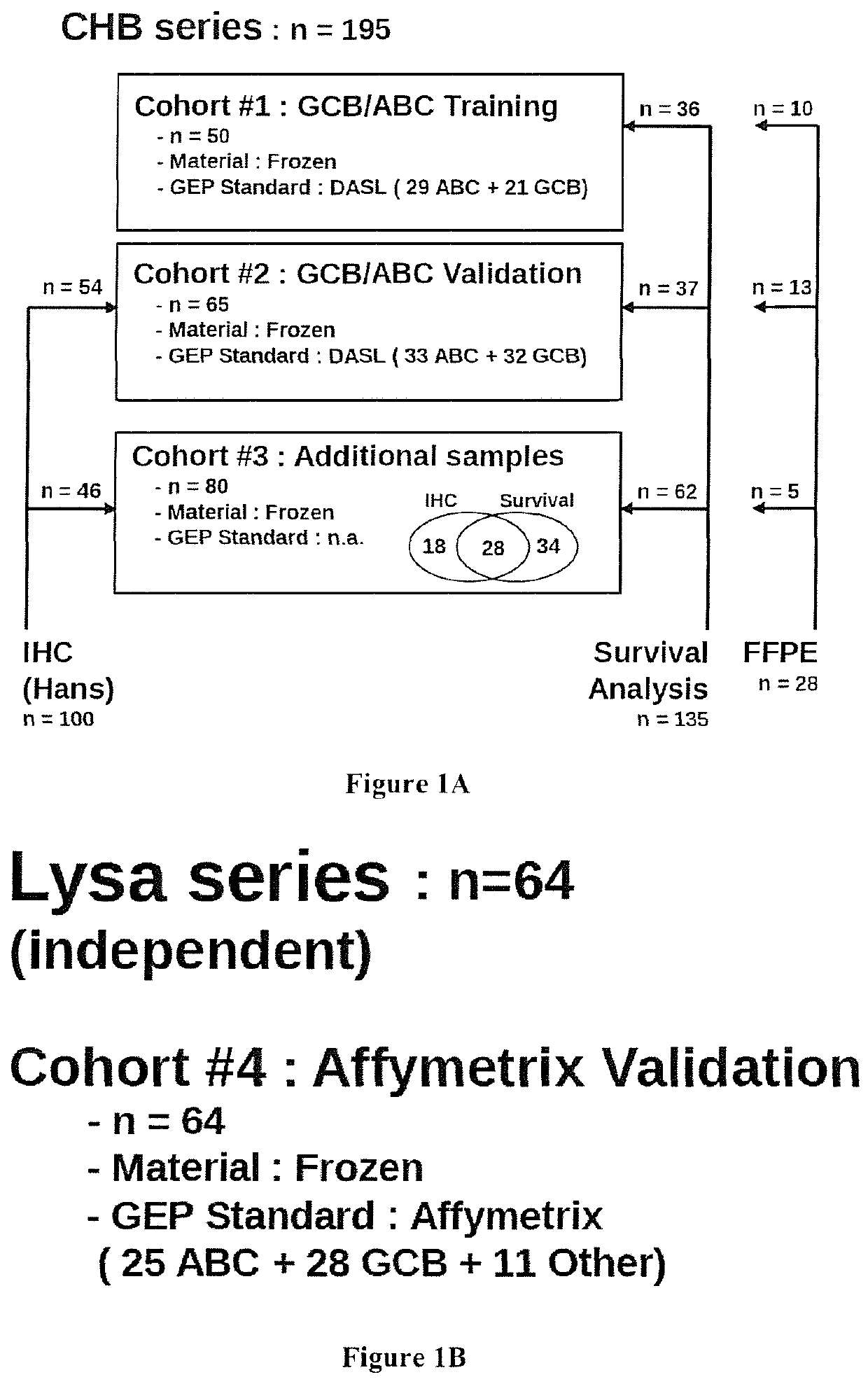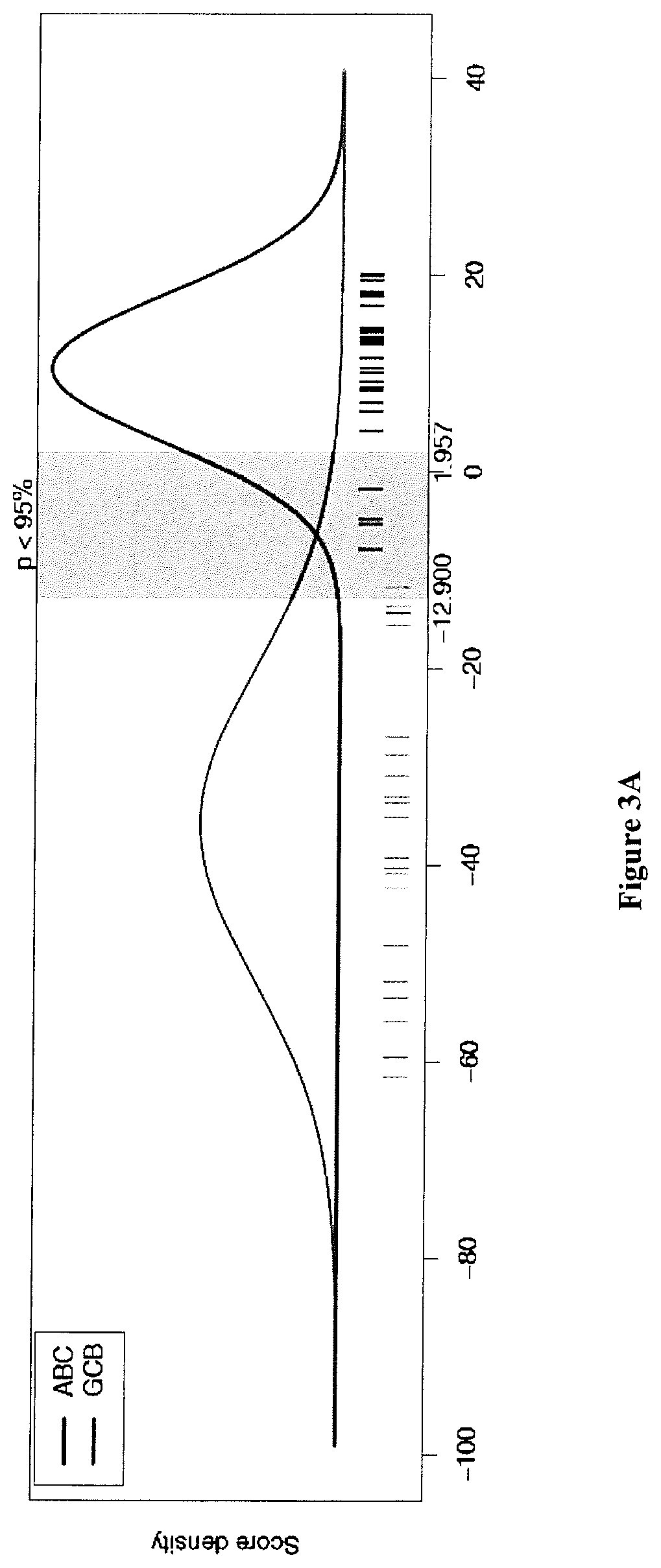Methods and kits for classifying diffuse large B-cell lymphomas (DLBCLs) into GCB-DLBCLs or into ABC-DLBCLs
a technology of kit, which is applied in the field of methods and kits for classifying diffuse large bcell lymphoma (dlbcl) of a subject into gcbdlbcl or abcdlbcl, can solve the problems of array-based gene expression profiling, morphologically undistinguishable, and inability to respond, etc., to achieve rapid, parsimonious and accurate classification
- Summary
- Abstract
- Description
- Claims
- Application Information
AI Technical Summary
Benefits of technology
Problems solved by technology
Method used
Image
Examples
example
[0221]Materials and Methods
[0222]Patients
[0223]A total of 259 DLBCL patients were included in this study (FIG. 1 and Table S1). All samples were obtained after receiving patient consent and this study was approved by our institutional review board. A first series of 195 patients from a single institution (Centre Henri Becquerel, Rouen, France) was used to train and validate the GCB / ABC classifier. A GCB / ABC classification previously determined using a DASL assay (cDNA-mediated Annealing, Selection, extension and Ligation method)18 was available for 115 patients. An immuhistochemical classification was available for 100 cases, and survival data for 135 of them. A second series of 64 patients included in the GHEDI study program conducted by the LYSA group and previously analyzed by gene expression profile arrays (Affymetrix U133A+2) was used as an external validation set19. For all patients, the inclusion criteria were de novo DLBCL with available RNA extracted from frozen lymph node ...
PUM
| Property | Measurement | Unit |
|---|---|---|
| confidence threshold | aaaaa | aaaaa |
Abstract
Description
Claims
Application Information
 Login to View More
Login to View More - R&D
- Intellectual Property
- Life Sciences
- Materials
- Tech Scout
- Unparalleled Data Quality
- Higher Quality Content
- 60% Fewer Hallucinations
Browse by: Latest US Patents, China's latest patents, Technical Efficacy Thesaurus, Application Domain, Technology Topic, Popular Technical Reports.
© 2025 PatSnap. All rights reserved.Legal|Privacy policy|Modern Slavery Act Transparency Statement|Sitemap|About US| Contact US: help@patsnap.com



